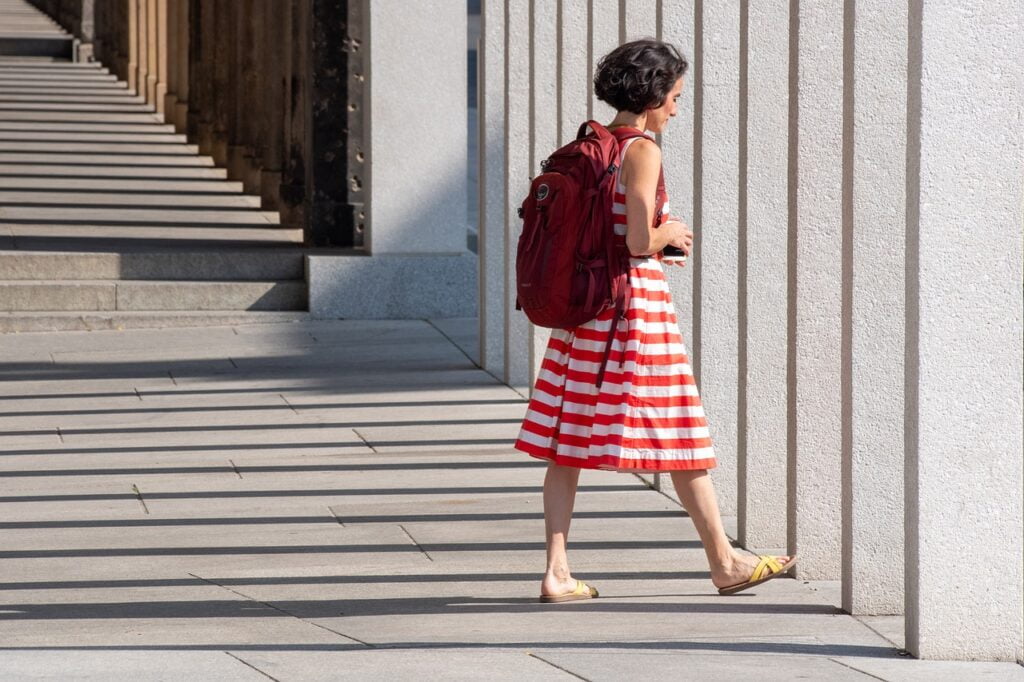When it comes to dress codes in schools, the line between casual and appropriate can sometimes blur. In recent years, there has been a growing trend towards more relaxed attire in educational institutions. However, amidst this shift, a burning question remains: Does casual dress mean school dress? In this article, I will explore the challenges and debates surrounding this issue, shedding light on the impact of casual dress codes on educational environments.

The Definition of Casual Dress
Casual dress refers to a style of clothing that is relaxed, comfortable, and informal. It is often associated with leisure activities and is characterized by clothing items such as jeans, t-shirts, and sneakers. While the specifics of casual dress may vary depending on the context, it generally emphasizes comfort and practicality over formality or professional attire.
Casual dress in the workplace
In recent years, there has been a shift towards more casual dress codes in the workplace. Many companies have adopted relaxed dress policies, allowing employees to dress in casual attire. This move is often seen as a way to create a more comfortable and inclusive work environment. By allowing employees to dress casually, companies hope to foster a sense of camaraderie and promote a more relaxed atmosphere.
Casual dress in social settings
Casual dress is also commonly seen in social settings such as parties or informal gatherings. In these contexts, casual dress allows individuals to express their personal style and personality more freely. It allows people to feel comfortable and at ease, promoting a relaxed and enjoyable social atmosphere.
Casual dress in school settings
The concept of casual dress is a topic of ongoing debate in school settings. Traditionally, schools have enforced strict dress codes that emphasize uniformity and conformity. However, in recent years, there has been a growing trend towards more relaxed dress codes, allowing students to dress more casually.
Benefits of Casual Dress in Schools
Promotes comfort and self-expression
One of the primary benefits of casual dress in schools is that it promotes comfort and self-expression. Traditional dress codes often require students to wear uncomfortable and restrictive clothing. By allowing students to dress casually, schools create a more relaxed and comfortable learning environment. Students are able to focus on their studies without the distraction and discomfort of formal attire. Additionally, casual dress allows students to express their individuality and personal style, fostering a sense of confidence and self-esteem.
Reduces peer pressure and bullying
Casual dress codes in schools have been found to reduce peer pressure and bullying. When students are required to wear uniforms or adhere to strict dress codes, it can create an environment where students judge and criticize each other based on their clothing choices. By allowing students to dress casually, schools eliminate this source of judgment and create a more inclusive and accepting environment.
Encourages creativity
Casual dress codes in schools also encourage creativity. Traditional dress codes often stifle students’ creativity and self-expression, limiting them to a narrow range of options. By allowing students to dress casually, schools give them the freedom to experiment with different styles and express themselves through their clothing choices. This can foster creativity and encourage students to think outside the box.
Fosters a sense of equality
Another benefit of casual dress in schools is that it fosters a sense of equality among students. Uniforms and strict dress codes can create a sense of hierarchy and division among students, with some feeling superior or inferior based on their clothing. By allowing students to dress casually, schools promote equality and eliminate these divisions. Students are judged based on their character and abilities, rather than their appearance.

Potential Drawbacks of Casual Dress in Schools
Difficulty in defining appropriate dress
One potential drawback of casual dress in schools is the difficulty in defining appropriate dress. While casual dress allows for more freedom and self-expression, it can also lead to confusion and disagreements over what is considered appropriate. Schools may struggle to strike the right balance between allowing individuality and maintaining a sense of professionalism and appropriateness. This can create confusion among students, parents, and staff, and may result in dress code violations.
Increased distractions
Casual dress codes in schools can also lead to increased distractions. When students are allowed to dress casually, they may be more tempted to wear clothing that is flashy, revealing, or otherwise attention-grabbing. This can create distractions in the classroom and make it more difficult for students to focus on their studies. It may also lead to social comparisons and competition among students, further diverting their attention from their academic responsibilities.
Potential for violation of dress codes
With more relaxed dress codes, there is a potential for students to violate dress code policies. Some students may push the boundaries of what is considered appropriate, wearing clothing that is too revealing or offensive. This can lead to disciplinary issues and create a challenging environment for teachers and administrators to manage. Schools must be prepared to address dress code violations and enforce the policies consistently and fairly.
Inequity among students
Casual dress codes in schools may also result in inequity among students. While the intention of allowing casual dress is to promote inclusivity and self-expression, it can inadvertently create divisions based on socioeconomic status. Students from lower-income families may not have the means to afford trendy or fashionable clothing, which can lead to feelings of exclusion and insecurity. Schools must be cognizant of this potential inequity and work towards mitigating it through inclusive policies and supportive resources.
Factors Influencing Dress Codes in Schools
Culture and societal norms
Dress codes in schools are influenced by culture and societal norms. Different cultures have different standards of dress and notions of modesty, which can shape dress code policies in schools. Societal norms also play a role in influencing dress codes, as schools aim to prepare students for the expectations of the broader society. Understanding cultural and societal influences is crucial in developing dress code policies that are respectful and inclusive.
School policies and regulations
School policies and regulations play a significant role in determining dress codes. Administrators and school boards have the authority to establish dress code policies based on their educational goals, values, and principles. These policies may vary from school to school, reflecting the unique characteristics and needs of each institution.
Safety concerns
Safety considerations also influence dress codes in schools. Certain clothing items, such as hats or loose garments, may pose safety risks in particular situations, such as laboratory settings or physical education classes. Dress codes may include guidelines to ensure the safety of students and staff in these environments.
Parental and community expectations
Parental and community expectations play a vital role in shaping dress codes in schools. Schools often seek input from parents, guardians, and community members to develop policies that reflect the values and preferences of the school community. Engaging stakeholders in the decision-making process can help ensure that dress code policies are well-received and supported.

Education vs. Individual Expression
Balancing the need for conformity and freedom of expression
One of the central challenges in implementing dress codes in schools is striking a balance between the need for conformity and the desire for freedom of expression. On one hand, dress codes can help create a sense of unity and discipline among students. On the other hand, they must also respect students’ right to express themselves and their individuality. Achieving this delicate balance requires careful consideration and clear guidelines that allow for personal expression within appropriate boundaries.
Impact on students’ learning and focus
Dress codes can have a significant impact on students’ learning and focus. When students are comfortable and not distracted by restrictive or uncomfortable clothing, they are more likely to be engaged in their studies. However, dress code policies that are too permissive or lenient may lead to increased distractions and a lack of focus in the classroom. Finding the right balance is essential for creating a positive and productive learning environment.
Ensuring a positive and inclusive school environment
Dress codes should ultimately contribute to a positive and inclusive school environment. They should promote respect, tolerance, and equality among students. Dress codes should be designed to prevent discrimination and ensure that all students feel comfortable and safe at school. It is important to regularly evaluate and adjust dress code policies to ensure they uphold these principles and continue to support a positive school culture.
Examples of Casual Dress Codes in Schools
Relaxed dress codes with basic guidelines
Some schools have implemented relaxed dress codes with basic guidelines. These dress codes allow for casual attire but still provide general guidelines to ensure appropriateness. For example, schools may allow students to wear jeans, t-shirts, and sneakers, but prohibit clothing with offensive slogans or images. This approach gives students flexibility in their clothing choices while maintaining a level of professionalism and respect.
Uniform-like dress codes with stricter rules
Other schools have adopted uniform-like dress codes with stricter rules. These dress codes may require students to wear specific colors or styles of clothing but still allow for some individuality. For example, a school may require students to wear polo shirts and khaki pants, but allow them to choose from a variety of colors. This approach maintains a sense of uniformity while allowing for personal expression within certain parameters.
Progressive dress codes that allow personal style and creativity
Some schools have implemented progressive dress codes that allow for personal style and creativity. These dress codes may provide more flexibility and allow students to express themselves through their clothing choices. For example, a school may allow students to wear a wide range of clothing items, including dresses, skirts, and shorts, as long as they meet certain modesty guidelines. This approach fosters a sense of individuality and creativity while still maintaining basic standards for appropriateness.
Case Studies: Schools with Casual Dress Policies
Effectiveness of casual dress codes in promoting positive school culture
Several case studies have explored the effectiveness of casual dress codes in promoting positive school culture. These studies have found that casual dress policies can contribute to a more inclusive and supportive school environment. Students report feeling more comfortable and confident when they are allowed to dress casually, which positively impacts their overall well-being and academic performance. Additionally, casual dress policies have been found to reduce disciplinary issues related to dress code violations.
Challenges faced in implementing and enforcing casual dress policies
Implementing and enforcing casual dress policies can present several challenges for schools. One common challenge is defining what is considered appropriate dress and ensuring consistency in enforcement. Schools may also face resistance from parents or community members who are accustomed to more traditional dress codes. Additionally, addressing dress code violations can be time-consuming and require careful documentation and follow-up procedures.
Student and teacher perspectives on the benefits and drawbacks
Student and teacher perspectives on the benefits and drawbacks of casual dress in schools vary. Some students appreciate the freedom and self-expression that casual dress allows, as well as the comfort it provides. Teachers often find that relaxed dress codes create a more relaxed and positive atmosphere in the classroom. However, there may also be concerns about distractions and violations of dress code policies. It is important for schools to gather feedback from both students and teachers to ensure that dress code policies are well-received and effective.
Steps to Implementing a Casual Dress Policy in Schools
Gaining consensus from key stakeholders
Before implementing a casual dress policy, it is essential to gain consensus from key stakeholders. This may include administrators, teachers, parents, students, and community members. Engaging in a collaborative decision-making process can help ensure that all perspectives are considered and that the policy reflects the values and expectations of the school community.
Developing clear and flexible guidelines
When implementing a casual dress policy, it is crucial to develop clear and flexible guidelines. The guidelines should clearly define what is considered appropriate and inappropriate dress and provide examples to guide students and parents. It is also important to allow for some flexibility and accommodate cultural or religious attire. Clear communication of the guidelines is essential to avoid confusion and minimize dress code violations.
Educating students and parents on expectations
Once the casual dress policy is established, it is important to educate students and parents on the expectations. This can be done through informational meetings, written materials, and ongoing communication. Schools can also provide resources or suggestions for affordable and appropriate clothing options to ensure that all students have access to suitable attire.
Regular evaluation and adjustment
A casual dress policy should be regularly evaluated and adjusted based on feedback and observations. Schools should regularly assess the impact of the dress code on the school culture, student behavior, and academic performance. Adjustments may be necessary to address any challenges or issues that arise and to ensure that the dress code continues to contribute to a positive and inclusive school environment.
Legal Considerations and Dress Code Policies
Constitutional rights and freedom of expression
Dress code policies must take into account constitutional rights and freedom of expression. Schools must be mindful of students’ First Amendment rights and ensure that dress code policies do not infringe upon these rights. Courts have generally held that dress code policies are permissible as long as they are reasonable and do not suppress students’ individuality or creativity.
Gender-specific dress codes and potential discrimination
Gender-specific dress codes have been a subject of controversy and legal challenges. Schools must be cautious in implementing dress codes that impose different requirements or restrictions on students based on their gender. Such policies can be seen as discriminatory and may contribute to gender stereotypes. It is important to develop dress code policies that are inclusive and do not unfairly target certain genders.
Addressing religious and cultural attire
Dress code policies should also consider religious and cultural attire. Schools must be sensitive to the diverse religious and cultural backgrounds of their students and allow for appropriate and respectful attire. It is important to consult with religious and cultural leaders, as well as students and parents, to ensure that dress code policies do not infringe upon students’ religious or cultural practices.
Conclusion: Striking a Balance
Finding a balance between dress codes and individual expression is essential in creating a positive and inclusive school environment. Dress codes can serve important purposes in promoting inclusivity, professionalism, and safety. At the same time, students should have the freedom to express themselves and feel comfortable in their clothing choices. By carefully considering the benefits and challenges of casual dress in schools, and by involving key stakeholders in the decision-making process, schools can work towards dress code policies that strike a balance between individual expression and academic success.